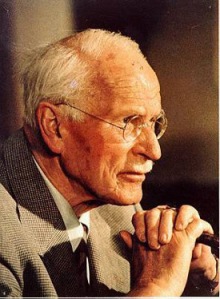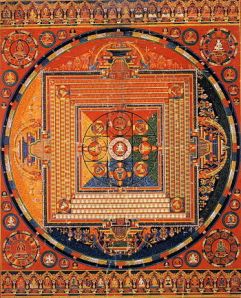Heidekolb's Blog
A Little Help From a Master ~ Jungian Reflections
3 Comments
A few days ago I was in the presence of a master. These occasions do not happen all that often. I was lucky to have had a chance to be present at a dharma talk with Thich Nhat Hanh, the 85 year old Vietnamese Zen master, who was one of the founders of the “Engaged Buddhism” movement. Something happens when one is in the presence of a genuine master. At least if one can show up with some degree of openness and a willingness to receive. This something that happens is a transmission. Transmission can only originate from someone whose knowledge is rooted in lived experience and has become anchored in the tissues and bones of the physical body. We are then in a realm that transcends bookish knowledge gathered in purely academic pursuit. There is a moment when consciousness permeates every cell and lightens up one’s awareness. Consciousness can shine brightly. We are humbled and grateful for we know then, we are in the presence of a master.
 This level of consciousness is usually hard-earned. It is life’s gift after much inner work, focused concentration and often much emotional suffering. It comes like an unexpected embrace by Sophia, the personification of divine wisdom. It is the relief of dew drops calming parched skin. Surely one gets there only on one of the roads less traveled. “Stop thinking”, Thich Nhat Hanh says, “and relax”. Relax down into your bones, because without that deep relaxation one is not able to receive, not what is “out there” nor the images and guidance we all have available from within. ~ Exhale, relax, let go ~ that is a good start for all things.
This level of consciousness is usually hard-earned. It is life’s gift after much inner work, focused concentration and often much emotional suffering. It comes like an unexpected embrace by Sophia, the personification of divine wisdom. It is the relief of dew drops calming parched skin. Surely one gets there only on one of the roads less traveled. “Stop thinking”, Thich Nhat Hanh says, “and relax”. Relax down into your bones, because without that deep relaxation one is not able to receive, not what is “out there” nor the images and guidance we all have available from within. ~ Exhale, relax, let go ~ that is a good start for all things.
 When asked what religion I follow, I like to answer with, “I am a Jungian”. That allows me to make room for spirituality, for what is larger than human life and ego consciousness, without getting caught in any dogma. The notion of transmission makes sense if we allow for the possibility of an interconnected universe in which nature and psyche are embedded. This was Jung’s vision and with this appreciation the mysterious processes of synchronicity and transmission fall into sync. The necessity for transmission may have been at the root of Jung’s requirement, in which he differed from Freud, that all Jungian analysts-in-training undergo a thorough analysis. He knew that we can accompany the individuals entrusted in our care only as far and deep as we ourselves have dared to venture. Jungian training worth its salt must not err on the side of prioritizing academic achievements, but maintain a vestige in the ancient tradition of mystery schools.
When asked what religion I follow, I like to answer with, “I am a Jungian”. That allows me to make room for spirituality, for what is larger than human life and ego consciousness, without getting caught in any dogma. The notion of transmission makes sense if we allow for the possibility of an interconnected universe in which nature and psyche are embedded. This was Jung’s vision and with this appreciation the mysterious processes of synchronicity and transmission fall into sync. The necessity for transmission may have been at the root of Jung’s requirement, in which he differed from Freud, that all Jungian analysts-in-training undergo a thorough analysis. He knew that we can accompany the individuals entrusted in our care only as far and deep as we ourselves have dared to venture. Jungian training worth its salt must not err on the side of prioritizing academic achievements, but maintain a vestige in the ancient tradition of mystery schools.
Jungian thought at its core opens up a deeply spiritual realm. But just as Thich Nhat Hanh’s “Engaged Buddhism” is a lived practice aimed at building compassion and easing suffering to make this world a better place for all, Jungian thought, if it is to be worth its salt, also must be a practice, but one with a very different focus. Jung, being a true steward of psyche, stayed away from all moral demands. His vision was a holistic one. His focus was individuation, which means becoming more fully oneself. This is not a form of perfectionism but completeness. It requires finding ways of dealing with all forces, positive and negative, light and dark, within oneself and in the collective, the world at large. This is why Jungian work at its core is always shadow work. And there is always more to come, as the Shadow, being archetypal, can never be fully integrated. Yet, as Jungians we soldier on and journey towards a greater degree of relating to that that we do not wish to be or that that we cannot fathom to also be part of who we are. As Jungians we train our eyes to see into and withstand the darkness. Welcome to another road less traveled.
 It is a dangerous road. Nietzsche did well by reminding us of its danger: “Battle not with monsters, lest ye become a monster and if you gaze into the abyss, the abyss gazes also into you”. Yet it can be done. Seeing Thich Nhat Hanh I knew it was possible to understand and suffer the darkness without being overtaken. I knew because it was transmitted. The diligent practice of mindfulness, as championed in the Buddhist tradition, develops our capacity for compassion. It strengthens our emotional heart and quite possibly our physical heart as well.
It is a dangerous road. Nietzsche did well by reminding us of its danger: “Battle not with monsters, lest ye become a monster and if you gaze into the abyss, the abyss gazes also into you”. Yet it can be done. Seeing Thich Nhat Hanh I knew it was possible to understand and suffer the darkness without being overtaken. I knew because it was transmitted. The diligent practice of mindfulness, as championed in the Buddhist tradition, develops our capacity for compassion. It strengthens our emotional heart and quite possibly our physical heart as well.
Jungian work is very much the development of a unique art of seeing and perceiving. One eye is directed towards the Shadow in its many manifestations in our personal lives and in the injustices and cruelties of society, yet the other eye must learn to hold the vision of our heart’s deepest values and feelings. The more we individuate, the more we will care and feel for the world around us. Individuation takes us into the world, our communities, dissolves imaginary boundaries of race, gender, nationality and creed. Individuation allows us eventually to relate to all sentient beings and to even expand our awareness into the world of so-called inanimate matter.
It may not be the only way, but Thich Nhat Hanh’s way of generating peace and reconciliation provides tools and techniques to develop the compassion necessary for the daunting path of facing the never ending Shadow without getting lost in it. I for one am deeply grateful that I had a chance to experience in person this humble monk yet great Zen teacher whose writings have provided me with much solace over the years. Grateful.

For more information on Thich Nhat Hanh and his work please visit plumvillage.org
On Soul and Darkness and Imagination: The Red Book Reflections
1 Comment
In the Red Book (RB) Jung documents his process of confronting a series of gruesome visions and fantasies filled with blood, destruction and cruelty. As I am writing this, images of the tragic news today of the massacre at Fort Hood flash through my mind. Jung’s recorded visions date from 1913 to 1914 and he considered them to be precognitive, foreshadowing the flood of destruction that would soon sweep through Europe. I am thinking of our culture’s current fascination with horror, violence and destruction, which, so we are told, will culminate in the cataclysmic events of “2012”. End days? The final hurray before the ultimate apocalypse? Maybe. Jung was deeply effected by the darkness that enveloped Europe during the First and Second World War. The horrors were unimaginable and it was indeed the end, the death for millions. Yet life continued. But the danger still looms. The archetype of the apocalypse (the violent pattern of disintegration of the world as we know it) continues to be the dominant force. Hindu mythology tells us that the dark age of Kali Yuga began 3000 BC and will last for another while (another 400 000 or more years). Are we depressed yet? Ready to stick the head in the sand or bury the nose in a bottle? I would not blame you.
But that is not what Jung did. One way of looking at the RB is, I suggest, as a “How To” book of some sort. How to gaze into the darkness and survive it. How to gaze into the darkness and bring forth meaning. How to gaze into the darkness and, Deo Concedente, find a shimmer of light in it. Not a job for the faint hearted, but then the Jung I know never was. One thing I am certain is that the RB will do away with for good with the notion that Jung is a fluffy, new agey psychologist whose path of individuation is filled with love and light and flowery archetypal imagery.
If we stay with the idea of looking at the RB as a “how to” (deal with these times) book a little longer, then Jung suggests the absolute necessity of “refinding the soul”( p.231). Not the idea of soul as it has been co-opted by religious institutions, but the very private soul (or psyche if you prefer). Our core that is capable of the most terrible suffering and the most ecstatic bliss. It is the expression of our shared humanity, which connects us to the larger world soul, the anima mundi. The soul in us feels, connects, longs for, desires. It finds and creates beauty. Cynicism, political games and unbalanced ambition are lethal to soul.
Jung writes:” He could find his soul in desire itself, but not in the objects (italics mine) of desire. If he possessed his desire, and his desire did not possess him, he would lay a hand on his soul, since his desire is the image and the expression of the soul. If we possess the image of a thing, we possess half the thing. The image of the world is half the world” (p.232). Jung develops here what is to become a hallmark of his work: an appreciation for the power of the imagination, the true alchemical imagination that creates and transforms worlds.
Looking back out into our blood stained, violent and cynical world as we spin (out of control?) towards 2012, it is our courage and willingness to follow the soul’s imagination that could change the trajectory of our current path of destruction, for nothing is ever written in stone.
Tags: 2012, anima mundi, apocalypse, archetype, C.G. Jung, depression, Fort Hood, humanity, image, imagination, individuation, Kali Yuga, psyche, soul, suffering, The Red Book